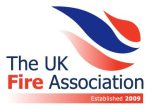At ESI: Electrical Safety Inspections, we deliver comprehensive fire safety services to businesses across Sleaford. Whether you manage an office, warehouse, retail premises, care home, school, or industrial site, we help you stay compliant, protect staff and customers, and safeguard your property.
With over 20 years of experience, we understand the legal and practical challenges businesses face when it comes to fire safety. Our qualified engineers and fire safety specialists provide expert advice, inspections, testing, and maintenance in line with UK regulations and British Standards.
Book Your Fire Safety Assessment Today – Protect your business and meet your legal obligations. Call us now on 01276 300 351 to schedule your visit.
Fire Safety Compliance and Best Practice
Sleaford businesses are legally required under the Regulatory Reform (Fire Safety) Order 2005 to maintain a safe environment and ensure that all fire safety systems and equipment are properly installed, maintained, and tested.
Our services are delivered in compliance with key standards, including:
-
BS 5839 – Fire detection and alarm systems
-
BS 5306-3 & BS 5306-8 – Fire extinguisher servicing and selection
-
BS 5266 – Emergency lighting installation and testing
-
BS 9990 – Dry riser testing and maintenance
-
BS 9991 & BS 9999 – Fire safety in residential and commercial buildings
Get Expert Fire Protection Advice – Speak to our qualified team about fire safety compliance and protecting your premises – Call today on 01276 300 351.
Our Fire compliance services in Sleaford
🔥 Fire Risk Assessments – Identifying hazards, evaluating risks, and providing practical recommendations to meet legal obligations under the Fire Safety Order.
🔥 Fire Alarm Servicing & Maintenance – Testing and maintenance of fire detection systems in line with BS 5839, helping ensure early warning in the event of fire.
🔥 Fire Extinguisher Supply & Servicing – Supplying, commissioning, maintaining, and testing portable extinguishers in accordance with BS 5306-3, ensuring equipment is ready to use when needed.
🔥 Emergency Lighting Testing & Maintenance – Inspection and testing to BS 5266 standards, ensuring emergency lighting works correctly to guide occupants to safety.
🔥 Dry Riser Inspection & Testing – Six-monthly visual inspections and annual pressure testing in compliance with BS 9990, keeping vital fire-fighting infrastructure ready for use.
🔥 Fire Safety Training – Practical staff training on fire prevention, extinguisher use, and evacuation procedures.
🔥 Fire Door Inspections – Checking condition, fit, and compliance of fire doors to ensure they provide effective compartmentation and protection.
Why Choose ESI in Sleaford
-
Qualified engineers and fire safety specialists serving Sleaford
-
In-depth knowledge of commercial and industrial fire safety compliance
-
Clear, actionable reports and certification
-
Flexible scheduling to minimise disruption
-
Supporting businesses across Sleaford and surrounding areas
Stay Compliant and Safe – Contact us on 01276 300 351 for a free quote on fire alarm servicing, extinguisher maintenance, and risk assessments.
Frequently Asked Questions
Q: How often should fire alarms be serviced?
A: Fire alarms should be tested regularly, with a minimum of two service visits per year for most systems, as recommended in BS 5839.
Q: What training do my staff need?
A: Under the Fire Safety Order, you are required to provide adequate fire safety training to all staff. We offer practical courses tailored to your premises and risk profile.
Q: Do you provide fire extinguisher servicing?
A: Yes – we supply, commission, and maintain fire extinguishers in line with BS 5306-3, ensuring you have the correct type and coverage for your business.
Fire Safety Services in Sleaford
Sleaford is a market town and civil parish in the North Kesteven district of Lincolnshire, England. On the edge of the Fenlands, it is 11 miles (18 kilometres) north-east of Grantham, 16 mi (26 km) west of Boston, and 17 mi (27 km) south of Lincoln. It is the largest settlement in North Kesteven with a population of 19,807 in 2021. Centred on the former parish of New Sleaford, the modern boundaries and urban area include Quarrington to the south-west, Holdingham to the north-west and Old Sleaford to the east. The town is bypassed by the A17 and the A15 roads. Sleaford railway station is on the Nottingham to Skegness (via Grantham) and Peterborough to Lincoln lines.
The first settlement formed in the Iron Age where a prehistoric track crossed the River Slea. It was likely home to a mint for the Corieltauvi in the 1st centuries BC and AD. Evidence of Roman and Anglo-Saxon settlement has been found. Medieval records differentiate between Old and New Sleaford, the latter emerging by the 12th century around the present-day market place and St Denys’ Church; Sleaford Castle was also built at that time for the Bishops of Lincoln, who owned the manor. Granted the right to hold a market in the mid-12th century, New Sleaford developed into a market town and became locally important in the wool trade, while Old Sleaford (based near the site of the prehistoric settlement) declined.
From the 16th century, the landowning Carre family kept tight control over the town – it grew little in the early modern period. The manor passed by marriage from to the Hervey family (Earls and later Marquesses of Bristol) in 1688. The town’s common lands were enclosed by 1794, giving ownership mostly to the Herveys. This coincided with canalisation of the Slea, which brought economic growth until it was superseded by the railways in the mid-1850s. These new transport links supported the development of light industries and expanded the town’s role in the trade in agricultural goods. Long a centre for justice and administration in north Kesteven, Sleaford became an urban district in 1894 and was also home to the former Kesteven County Council (1925–1974). After a period of stagnation, in the late 20th and early 21st centuries the sale of farmland around Sleaford led to the development of large housing estates, causing the population to rapidly expand and the urban area to engulf Quarrington and Holdingham.
Though its traditional market has declined in the 21st century (and its cattle and corn markets shut in the 20th century) and much of its heavier manufacturing has departed, Sleaford’s economy has diversified. The town remains an important administrative, service and commercial centre for the surrounding district. It houses supermarkets, shops and a large business park with offices and light manufacturing, and is home to the headquarters of North Kesteven District Council; three secondary schools (two of which are selective); four primary schools; three newspapers; police, fire and ambulance stations; several places of worship; many sports clubs; a leisure centre; and several medical and dental practices and care homes. Regeneration has transformed some earlier industrial areas, including through the construction of The Hub. The town is one of the largest employment centres in the district; the commonest employers in 2021 were the public sector, retail and, to a much lesser degree, manufacturing.








